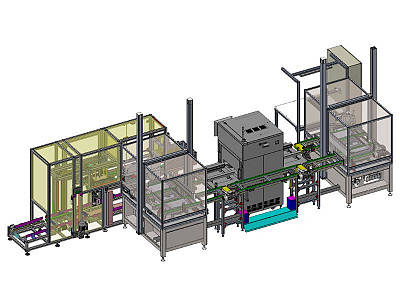Automated line for sorting and testing PCB assemblies
In an industry where precision and repeatability are key, automated solutions are essential to optimize the production of electronic components. We present a line for handling, testing, and packaging PCB assemblies that integrates manual loading, robotic processing, and automated packaging in blisters.
Initial challenge - The client sought a solution that would enable efficient processing of sensitive PCB assemblies after manual cutting. The system needed to include manual placement of components, automated handling using a robot, functional testing, sorting of parts, and precise packaging, while ensuring continuous operation, traceability, and easy maintenance.
Result - We have developed an input storage unit with machine vision and robotic handling, a pallet line with six dedicated pallets, conveyors, and an SPEA testing device, as well as an output unit with a storage unit for empty blisters and robotic filling. The line enables stable, reliable, and automated production with minimal operator intervention.
Solution description
The automated line is a modular system connecting manual circuit loading, robotic handling, automatic testing, and sorting of PCB circuits in a continuous cycle. The line uses six rotating dedicated pallets, allowing simultaneous throughput of multiple PCB assemblies. Each stage operates in coordination through precise position control, photoelectric sensors, and pneumatic actuators, ensuring repeatability and traceability.
All components and manufacturing processes are certified and suitable for ESD environments!
The system includes:
- an input workstation for cutting circuits and a conveyor belt for delivering circuits to the machine vision area,
- robotic cell 1 (RC1) with machine vision for loading circuits into the pallet bed,
- SPEA functional testing device,
- robotic cell 2 (RC2) for sorting and placing circuits into blisters,
- storage for empty boxes and blisters with a manipulator for stacking full blisters into boxes,
- lifts with belt conveyors for finished boxes,
- central control with an emphasis on the traceability system called traceability of components.
Explore more implemented solutions for clients in the electronics industry and discover opportunities to optimize your production.
Automated line operating process
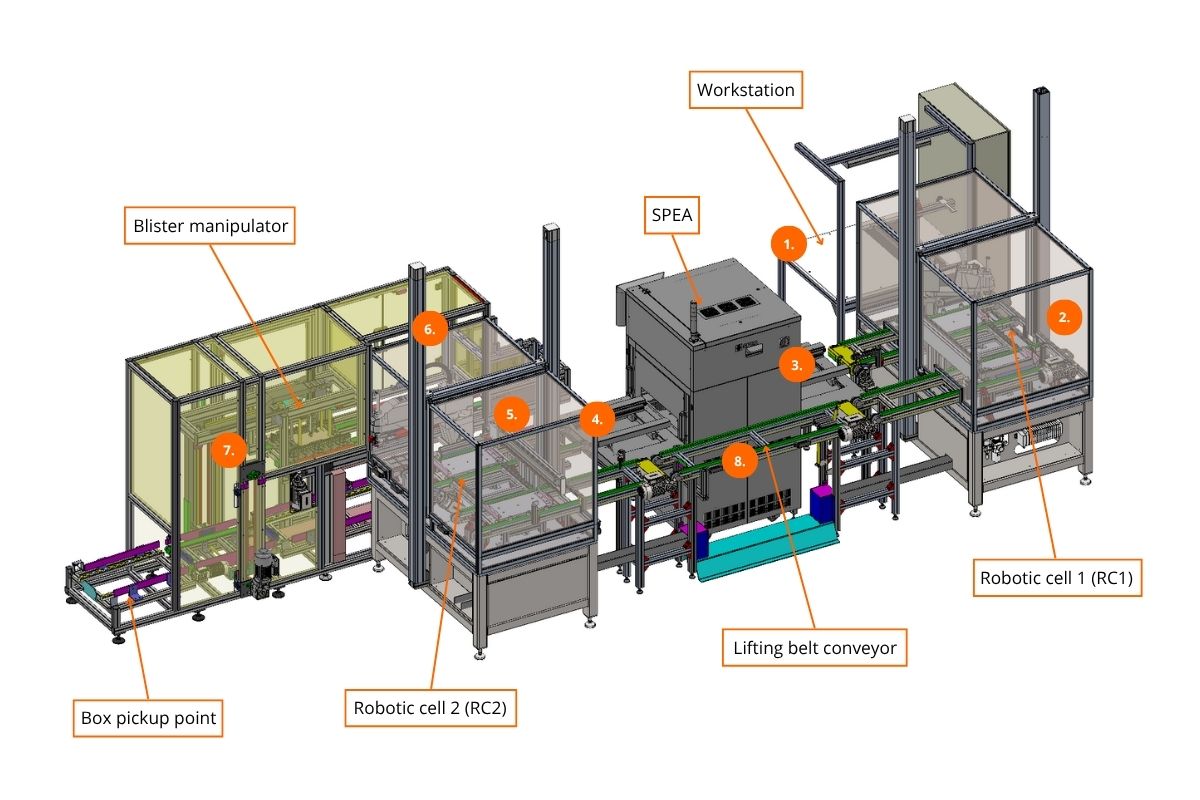
1. Manual loading of PCB circuits
After cutting, the operator manually places the circuits on the input conveyor belt in any position. When the pieces move into the machine vision detection position, the machine stops.
2. Removal of circuits with a robot in RC1
The machine vision in RC1 uses a camera to detect the position and rotation of the circuit and communicates the coordinates and orientation of each circuit separately to the robot. The robot moves the circuits to the pallet. The camera allows adjustment to different orientations without mechanical adjustment.
3. Transporting the pallet to the SPEA testing device
When the pallet is full, the pallet line transports it through the SPEA testing device, where automatic measurements and diagnostics of each individual circuit on the pallet are performed. The measurement information for each piece is forwarded to the database.
4. Transferring the tested pallet to RC2
The tested pallet is transported to RC2. If the receiving position is free, the pallet is lifted, aligned, and prepared for circuit removal.
5. Sorting assemblies based on test results
Based on the results from the database, the robot in RC2 sorts the circuits into good and bad ones. Faultless circuits are placed in blister packs, while faulty ones are placed in a waste bin. A QR code is used for each circuit for traceability purposes.
6. Automated blister packaging
The manipulator automatically replaces empty blister packs from the storage unit. The circuits are stacked according to a pattern (every other one rotated), up to 24 pieces per blister. When the blister is full, it is moved to the removal point, where a vacuum manipulator transfers it to a box.
7. Packaging blisters into boxes
The boxes are positioned automatically. The manipulator places the blisters into the box, with the last one serving as a lid. The filled box is moved forward for manual removal.
8. Returning empty pallets
Empty pallets are returned to RC1 via the upper conveyor. The system operates in a loop, with protective covers preventing operation when open.
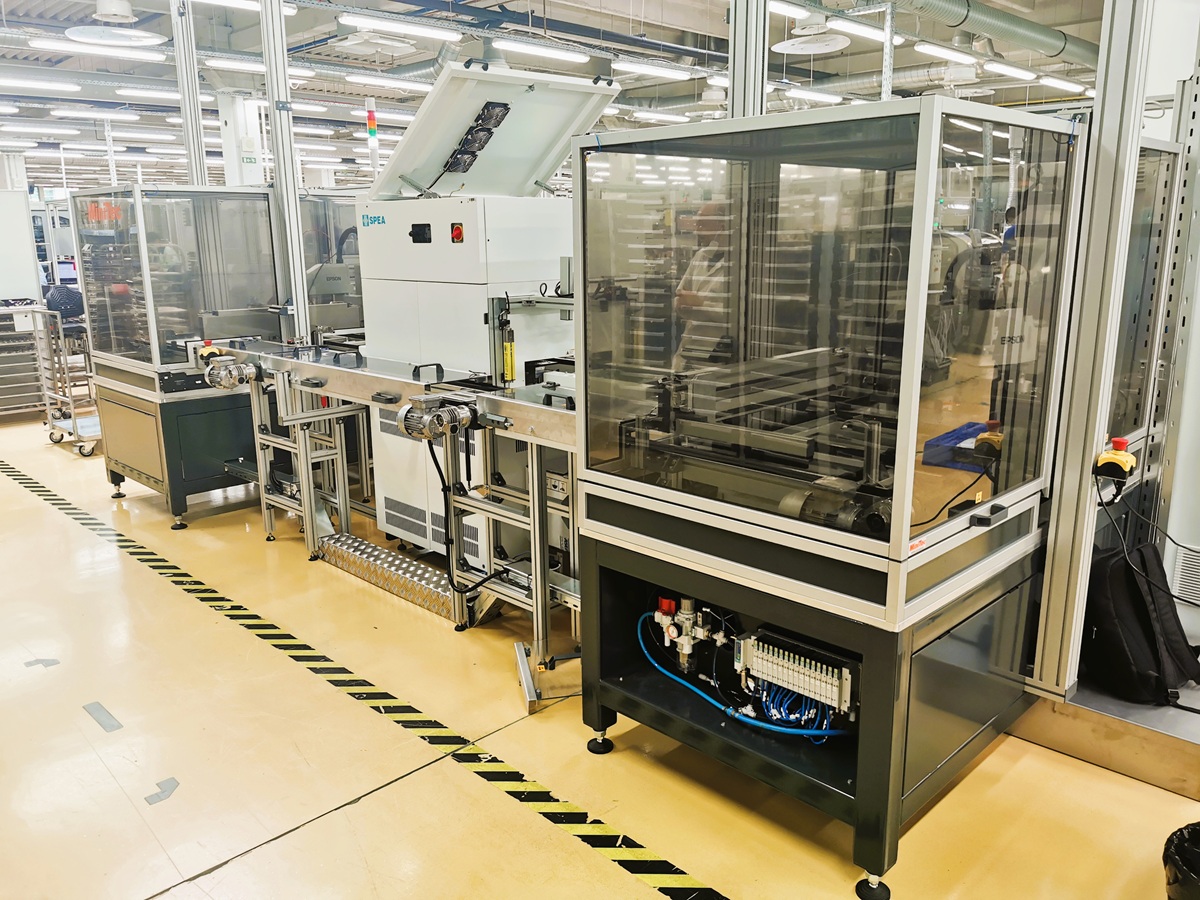
Entire line for sorting and testing PCB assemblies
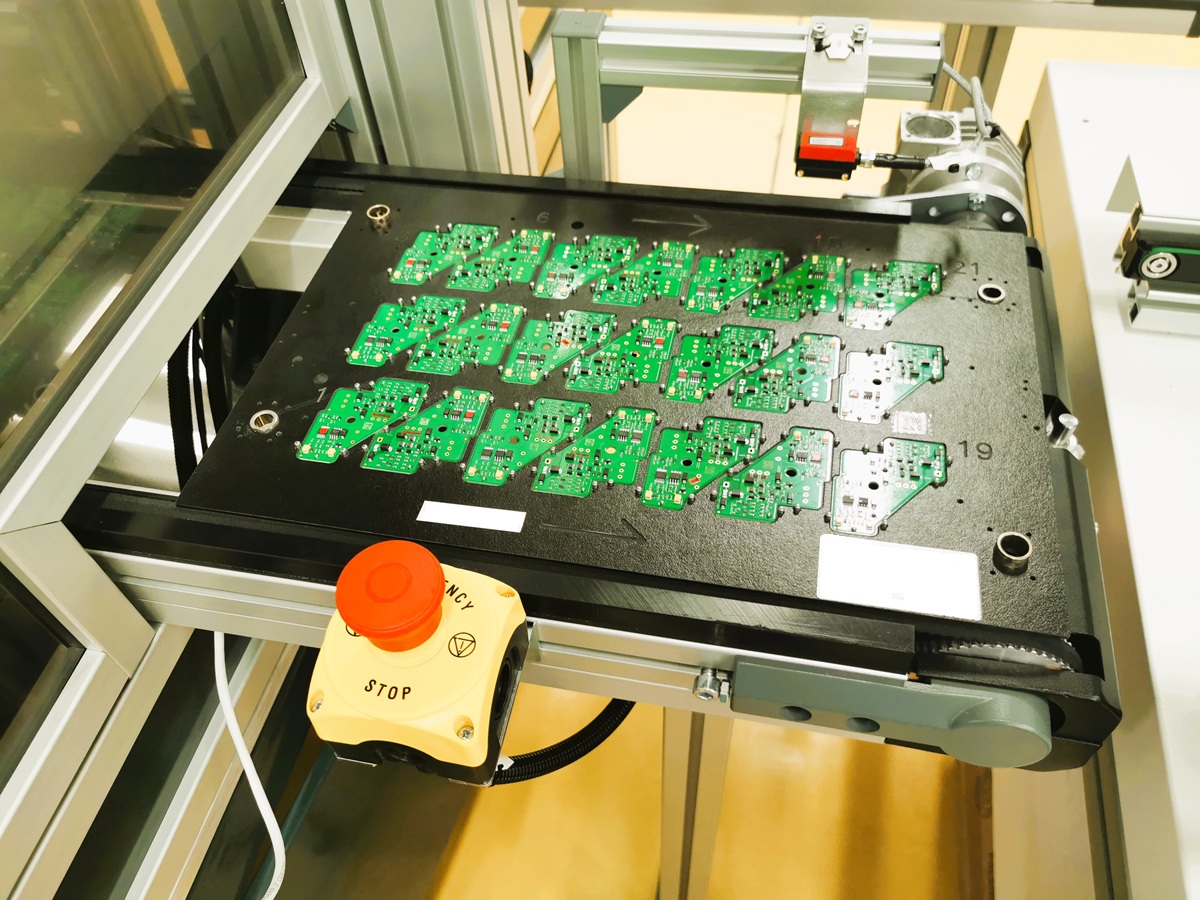
PCB circuits stacked in pallet bearings
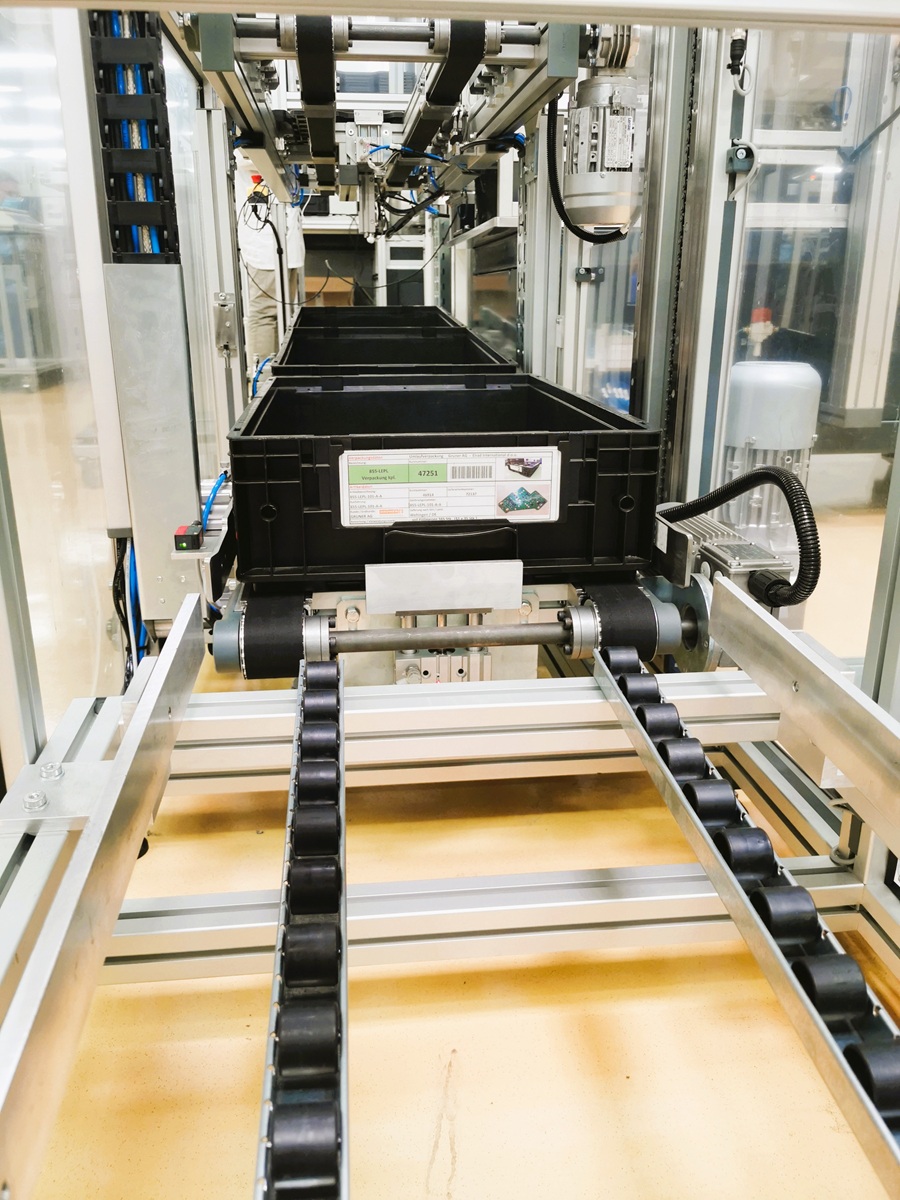
Empty box storage
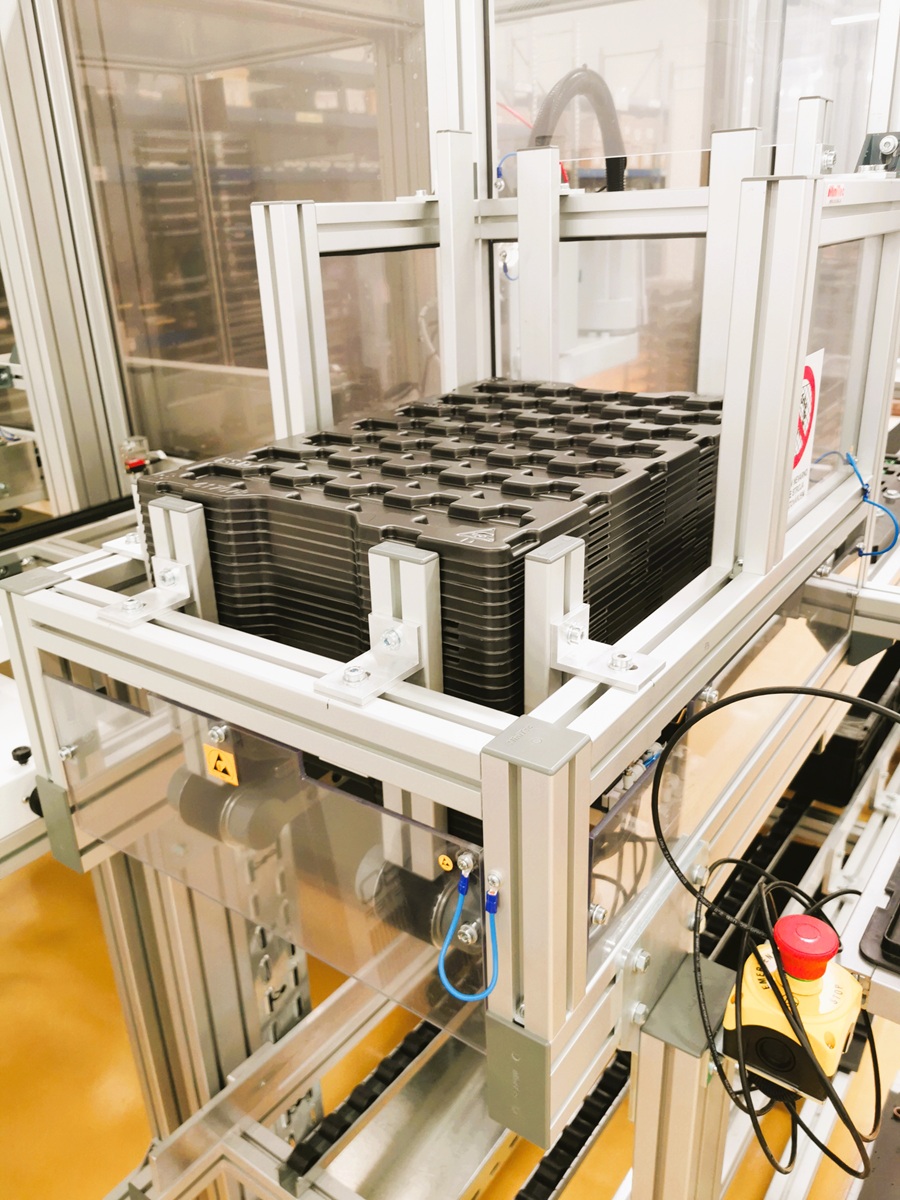
Empty blister storage container
